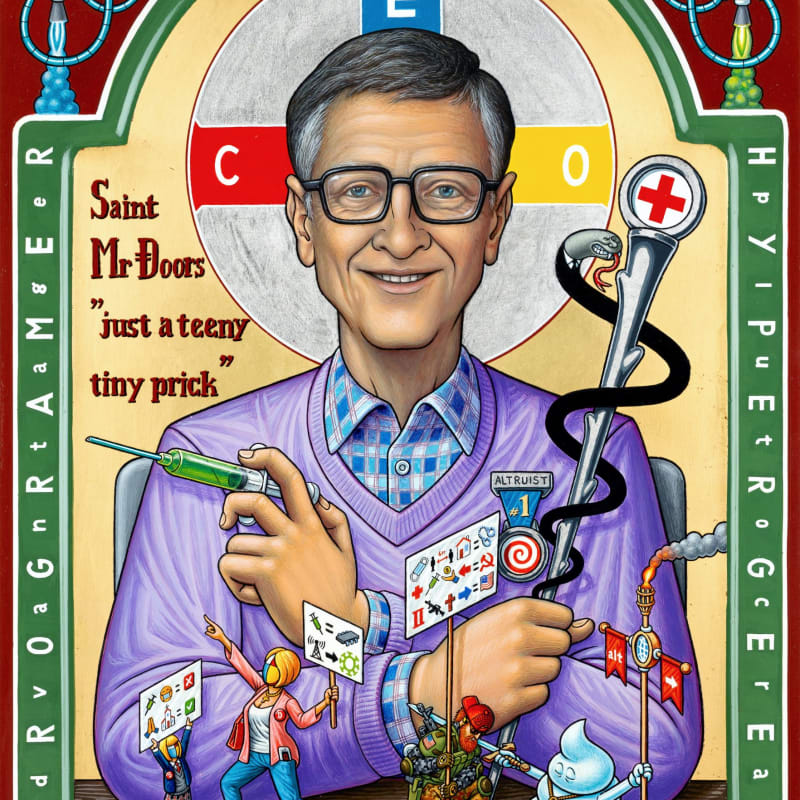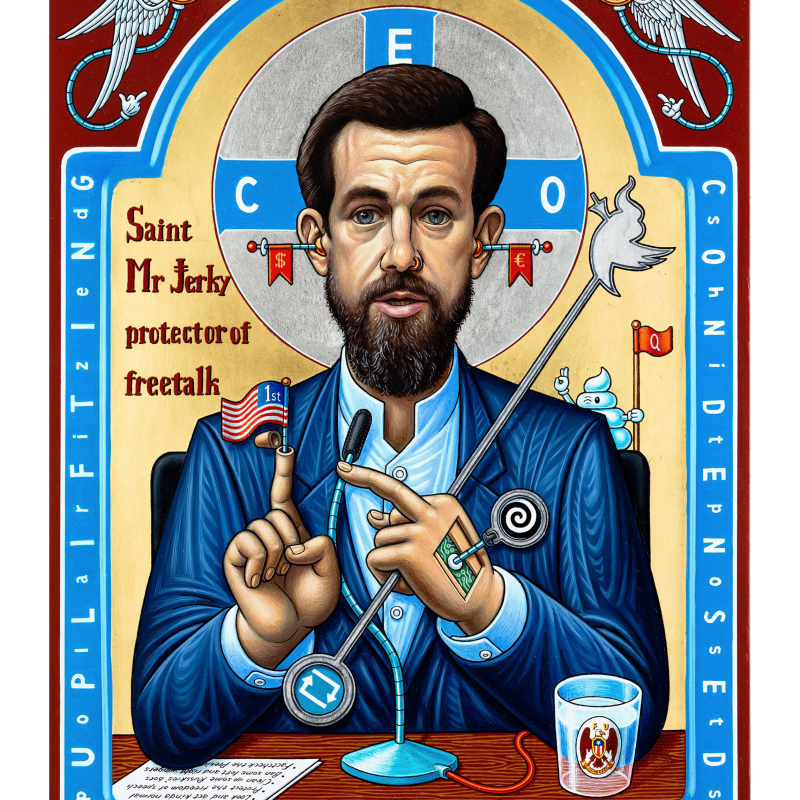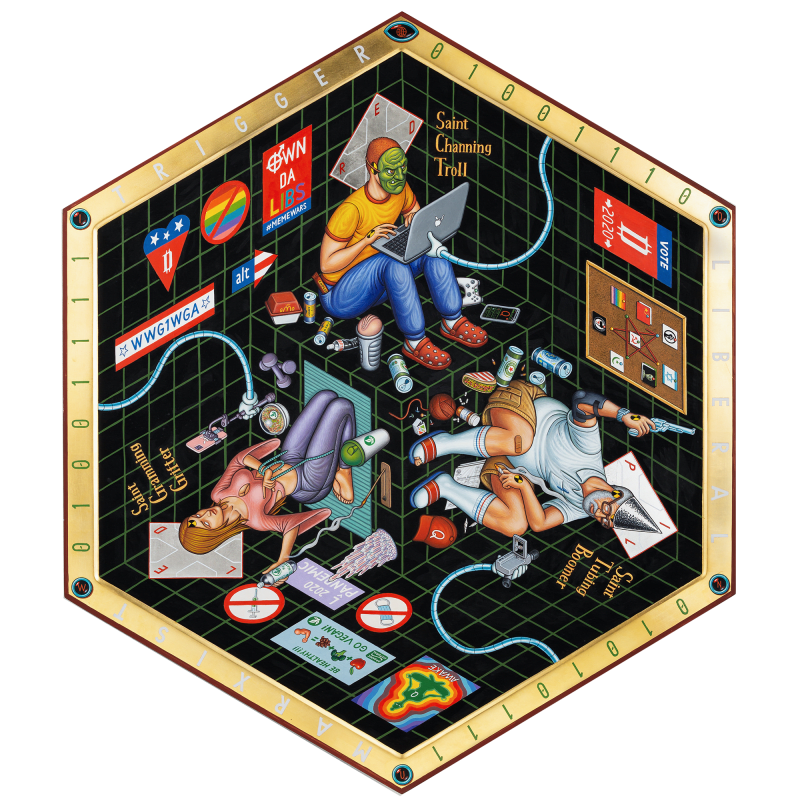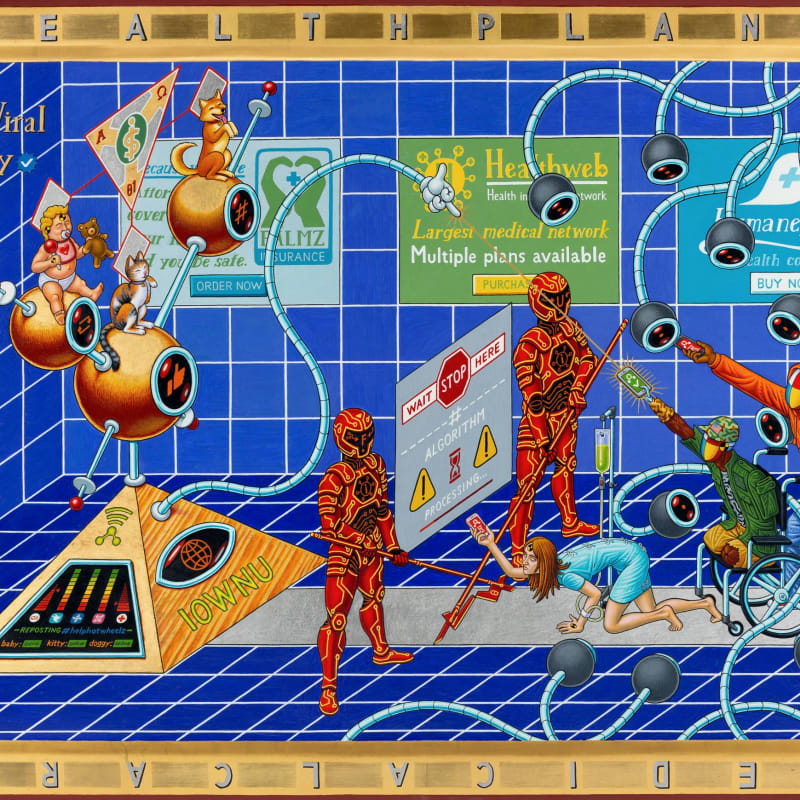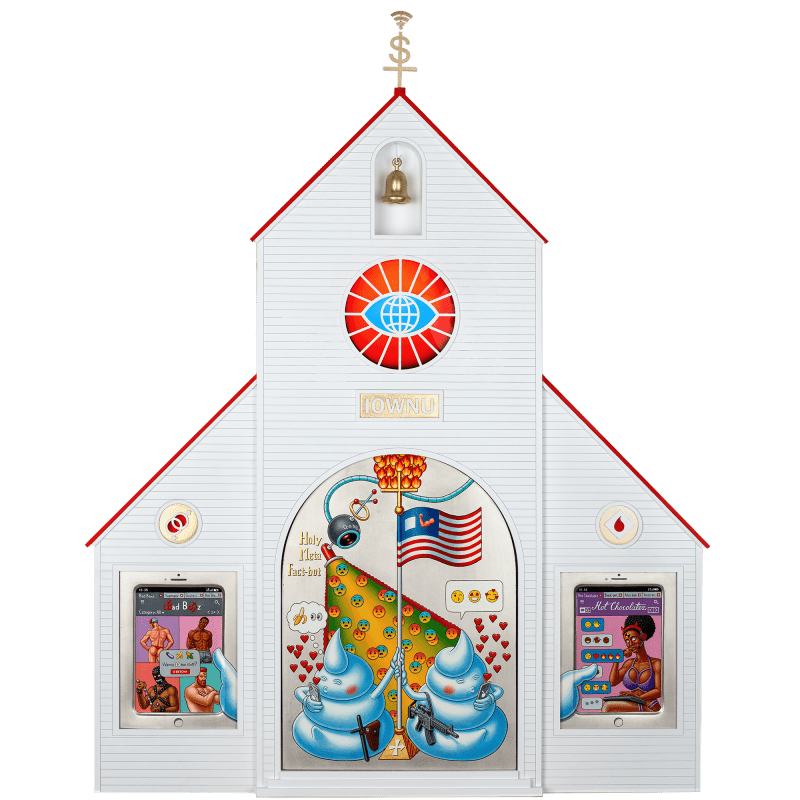
Dio Horia Gallery presents a new body of work by Serbian artist Aleksandar Todorovic. His works that are created mainly, with the use of traditional Byzantine painting techniques, look into the mechanics of the internet and specifically how the internet has transformed and how it influences our society.
The usage of the web, and its resulting consequences, are critically examined by Aleksandar Todorovic, through the usage of representational forms and visual symbols inherent in the sacral art of Eastern Orthodox Christianity. In his artworks that are often referred to as 'Icons', Todorovic mixes traditional Icon-making materials (like egg tempera and metallic), characteristic styles of pre-renaissance forms with visual elements (inscriptions, halos), with modern themes and visual solutions inspired by pop culture surrealism and the new contemporary art movement. Todorovic’s intention is to blend two types of narrative art, both ancient and modern, to create a sort of technological “gospel” which is not just descriptively representing factual events, but which also questions morality and humanity itself.
Themes in the works range from the destruction of our social safety nets like healthcare (which are being replaced by GoFundMe apps), to the hypocrisy of the white supremacy movement which is being promulgated by social networks. His works refer to and depict media conspiracy bubbles that are thriving in the dark corners of the Escher-like virtual space, while being overlooked by the saint-like portraits of our techno-libertarian Silicon Valley entrepreneurs and various innocuous everyday objects that suddenly become extremely valuable in our 'New Normal World', that is ready to be 'Amazon primed' with a single click to our doorsteps. Todorovic’s visual style is illustrative, meticulous and accessible. He subverts the visual codes of Western pop culture, advertising and the Eastern Christian tradition to meet his own artistic goals. The artist sugarcoats the criticisms of his subject matter, with politically incorrect humor in order to deceptively create colors and cartoon-like cheerfulness, combined with a rich vocabulary of symbols that he has personally developed over the years.
